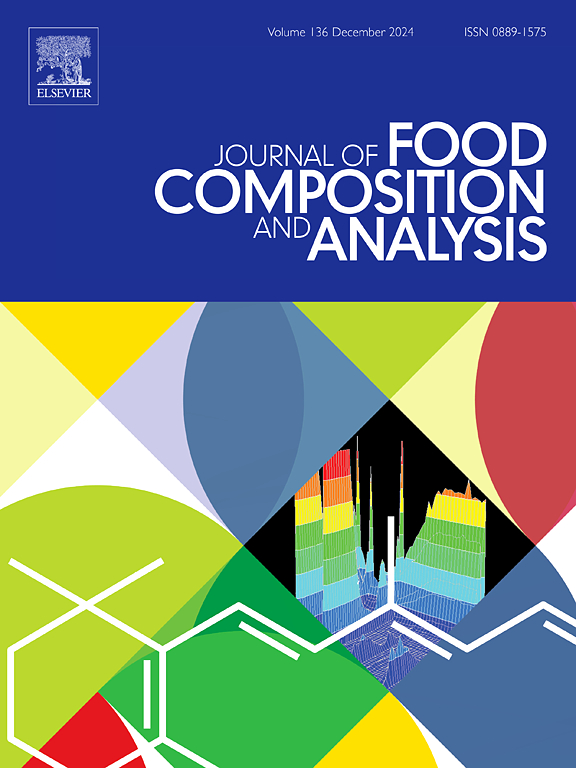有机精制剂对赤霞珠幼酒元素组成的影响
IF 4
2区 农林科学
Q2 CHEMISTRY, APPLIED
引用次数: 0
摘要
精制剂的处理是影响葡萄酒元素组成变化的重要因素。本文介绍了有机精制剂对赤霞珠品种红葡萄酒质量、安全性及鉴别特性影响的研究结果。用6种有机精化剂对年轻葡萄酒样品进行澄清和稳定。采用光学发射和质谱法测定了年轻葡萄酒样品中40种元素的浓度,并测定了精制剂中的含量。根据葡萄种植面积的不同,精化剂处理后的年轻葡萄酒中大量元素的浓度下降了2-9 %,微量元素的浓度从1 %下降到32 %。在未处理和处理过的年轻葡萄酒中,稀土元素的浓度几乎不存在。利用多维度分析方法,建立了处理后的年轻葡萄酒的簇状结构。有机精制剂可以使葡萄酒的元素成分保持在一个更自然的水平,这将是产品制造商所需要的。所得结果可用于制定在高质量葡萄酒生产中使用精制剂的建议。本文章由计算机程序翻译,如有差异,请以英文原文为准。
The effect of organic fining agents on the elemental composition of young Cabernet Sauvignon wine
The treatment with fining agents is an important factor that affects the change in the elemental composition of wines. The article presents the results of research on the effect of organic fining agents on the quality, safety and identification characteristics of red wine of the Cabernet Sauvignon variety. The samples of young wine were clarified and stabilized with six organic fining agents. The optical emission and mass spectrometry methods were used to determine the concentrations of 40 elements in samples of young wine, as well as in fining agents. Depending on the area of grape cultivation, the concentrations of macroelements in young wines after treatment with fining agents decreased by 2–9 %, and trace elements from 1 % to 32 %. Rare earth elements concentrations were virtually non-existent in both untreated and treated young wines. Using the multidimensional analysis methods, the presence of a cluster structure of treated young wines was established. Organic fining agents allow you to keep the elemental composition of wine at a more natural level, which will be in demand by manufacturers of products. The results obtained can be used to develop recommendations on the use of fining agents in the production of high-quality wines.
求助全文
通过发布文献求助,成功后即可免费获取论文全文。
去求助
来源期刊

Journal of Food Composition and Analysis
工程技术-食品科技
CiteScore
6.20
自引率
11.60%
发文量
601
审稿时长
53 days
期刊介绍:
The Journal of Food Composition and Analysis publishes manuscripts on scientific aspects of data on the chemical composition of human foods, with particular emphasis on actual data on composition of foods; analytical methods; studies on the manipulation, storage, distribution and use of food composition data; and studies on the statistics, use and distribution of such data and data systems. The Journal''s basis is nutrient composition, with increasing emphasis on bioactive non-nutrient and anti-nutrient components. Papers must provide sufficient description of the food samples, analytical methods, quality control procedures and statistical treatments of the data to permit the end users of the food composition data to evaluate the appropriateness of such data in their projects.
The Journal does not publish papers on: microbiological compounds; sensory quality; aromatics/volatiles in food and wine; essential oils; organoleptic characteristics of food; physical properties; or clinical papers and pharmacology-related papers.
 求助内容:
求助内容: 应助结果提醒方式:
应助结果提醒方式:


